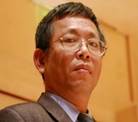Topic:Detecting small signals in videos and its applications
Reporter:Prof. Shun-Feng Su, National Taiwan University of Science and Technology, IEEE Fellow
Time:10:00-12:00 a.m., April 29th, 2019
Site:Room 105, School of Computer Science, NPU
Host:Haobin Shi, Associate Professor
Abstract:
Intelligent systems become so popular recently. An important characteristic for intelligent systems is that the system must be able to know its surrounding situations for actions/decisions. To sense the environment, the best way is through vision. It can be found nowadays that so many applications use images/videos in intelligent systems.For those who can detect (visible changes on image), we may try to find ways of detecting/recognizing them. Usually, we may go for feature-based recognition or recognition without definition. However, it is well known that there is conflict between intelligence and accuracy. How about the information that cannot directly observed by human? Maybe, those images/videos have already captured them. A video processing system can be used to identify those short-term visual changes (within frames). If those changes are considered as noise, a technique referred to as image de-noising (the process of removing sensor noise added during image capture) can be designed. On the other hand, one may want to magnify motions and changes that are too subtle to be seen by naked eyes. If possible, we may monitor some biomedical signals from videos, like breath motion or heartbeat.This talk will introduce those ideas used for detecting small signals from videos and possible applications for these techniques.
Introduction of the Reporter:

Shun-Feng Sureceived the B.S. degree in electrical engineering, in 1983, from National Taiwan University, and the M.S. and Ph.D. degrees in electrical engineering, in 1989 and 1991, respectively, from Purdue University, West Lafayette, IN.
He is now a Chair Professor of the Department of Electrical Engineering, National Taiwan University of Science and Technology. He is an IEEE Fellow and CACS Fellow. He has published more than 200 refereed journal and conference papers in the areas of robotics, intelligent control, fuzzy systems, neural networks, and non-derivative optimization. His current research interests include computational intelligence, machine learning, virtual reality simulation, intelligent transportation systems, smart home, robotics, and intelligent control.
Dr. Su is very active in various international/domestic professional societies. He is now the past president of the International Fuzzy Systems Association. He also serves as a board member of various academic societies. Dr. Su also acted as General Chair, Program Chair, or various positions for many international and domestic conferences. Dr. Su currently serves as Associate editors of IEEE Transactions on Cybernetics, IEEE Transactions on Fuzzy Systems, and IEEE Access, a subject editor (Electrical Engineering) of the Journal of the Chinese Institute of Engineers, and the Editor-in-Chief of International Journal of Fuzzy Systems.